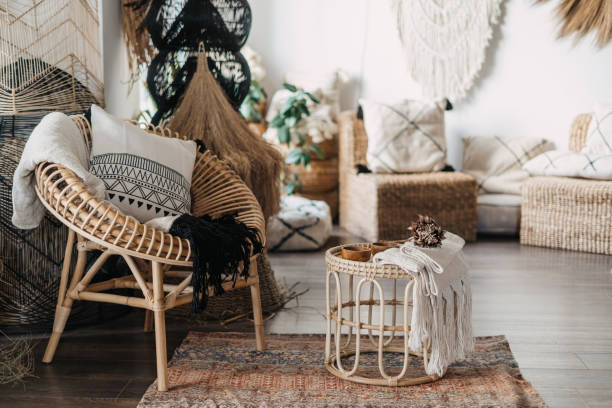Chair Styling Ideas to Elevate Your Interior Without a Full Redesign
A thoughtfully styled chair can shift the mood of a room, introduce color and texture, and create a focal point—without changing floors, paint, or major furniture. By updating textiles, finishes, and placement, you can refresh living spaces quickly and responsibly, whether you rent or own, and achieve a cohesive look that feels intentional and current.

Chairs are small-scale design canvases that can transform a room with minimal effort. Because they are movable and relatively compact, they invite experimentation: a new cushion, a slipcover, a changed angle, or a different finish can recalibrate balance, color, and comfort. Focusing on a few targeted updates allows you to elevate the overall interior, align with modern decor sensibilities, and create a cohesive visual rhythm across living spaces without a full redesign.
Ideas for elevating interior design through chair styling
Treat chairs as accents that reinforce your color story. Repeat one hue from a rug, artwork, or throw in the chair upholstery or cushion piping to create continuity. If your palette is neutral, introduce a modest dose of contrast—think charcoal on oat, or olive on cream—to build depth without overwhelming the space. Balance visual weight by pairing a bold chair with lighter, low-profile side tables or an airy floor lamp so the composition feels grounded rather than heavy.
Scale and proportion matter. A slim-legged accent chair lightens a dense room, while a wider lounge chair anchors an open plan. Leave breathing room around each piece; negative space is essential to perceived luxury and calm. To enhance function, group two chairs at a conversational angle with a small round table between them, creating an easy reading corner. Use a tray to corral a book and mug so the setup feels intentional, not cluttered.
Understanding modern decor elements and textures
Modern decor elements rely on clean lines, honest materials, and tactile variety. Mixing textures—bouclé, linen, velvet, leather, cane, or ribbed wood—adds dimension without relying on pattern alone. Aim for a hierarchy: one dominant texture on the chair, one supporting texture in a pillow or throw, and a subtle third in nearby accessories. Finish plays a role, too; matte wood or powder-coated metal diffuses light, while polished brass or chrome adds crisp highlights.
Think about temperature and tone. Combine warm materials like walnut or tan leather with cool counterparts such as slate-colored metal to create balance. If your room has many sleek surfaces, soften the look with nubby textiles or a shearling drape over a structured frame. Performance fabrics make high-traffic seating more practical, especially in family rooms, while removable slipcovers offer an easy-care option for households that prefer frequent laundering.
Creative ways to refresh chairs in living spaces
Textile updates are the fastest refresh. Swap pillow covers seasonally, add a tie-on seat pad for wooden dining chairs, or layer a throw diagonally across a lounge chair to spotlight color and texture. Slipcovers—tailored or relaxed—can hide dated upholstery and introduce new lines. For renters, fabric ties or elastic-edge covers avoid staples or adhesive. If reupholstery is on the table, ask local services in your area about fabric yardage and foam replacement to improve comfort as well as appearance.
Hardware and finish adjustments subtly shift style. Replace visible screws with blackened versions for a modern note, add felt glides for a sleeker silhouette on hard floors, or update casters on a vintage office chair. Wood frames respond well to careful cleaning and a fresh coat of wax or a light restain; painted frames can be renewed with a scuff-sand and a durable water-based enamel. Always test finishes on an inconspicuous spot to ensure compatibility.
Arrangement upgrades amplify every styling choice. Angle a single accent chair toward a window to capture natural light, or float a pair slightly off the rug to define a conversation zone without crowding a sofa. Maintain sightlines by keeping chair backs below window mullions when possible. If lighting feels flat, place a floor lamp just behind and to the side of the chair; this cross-lighting highlights texture in upholstery and adds evening ambiance.
Consider pattern strategy for cohesion. If your rug or curtains already feature a prominent motif, keep chair patterns small in scale or rely on solid fabrics with distinctive weaves. Conversely, a quiet room can handle a bolder stripe or check on a chair, especially when you repeat the pattern color elsewhere. Use piping, flange edges, or contrast stitching to outline forms and deliver a crisp finish without full reupholstery.
Sustainability can guide stylish choices. Extend the life of a well-made chair with new foam, webbing, or slipcovers rather than replacing it. Source vintage pieces with strong bones and refresh them with modern textiles so the blend reads intentional. If buying new, look for FSC-certified wood and low-VOC finishes, and consider modular cushions that can be laundered or replaced over time, lowering waste while keeping the look fresh.
A thoughtful approach to chair styling pairs aesthetics with function. By coordinating color, layering texture, refining finishes, and optimizing placement, you can reshape the atmosphere of a room at a reasonable scale. These focused updates create a clear narrative across living spaces, allowing the interior to evolve with needs and seasons while remaining cohesive and comfortable.




